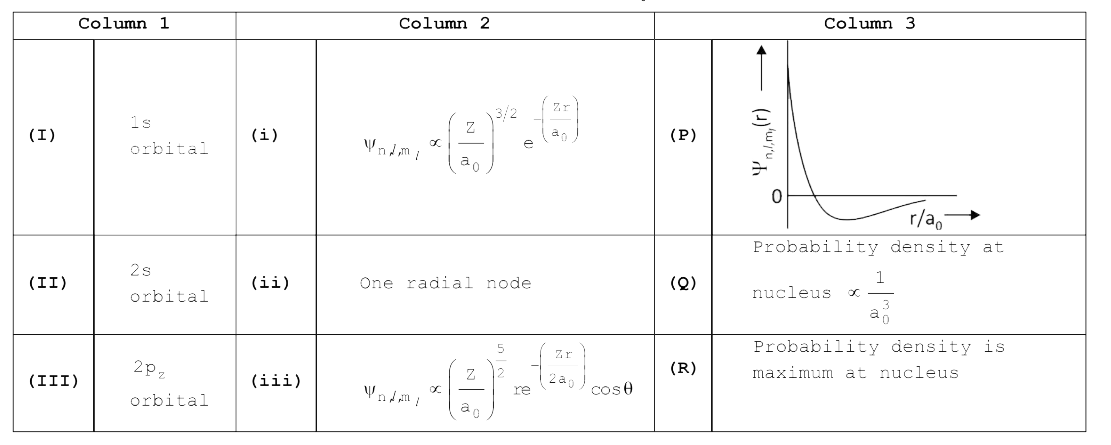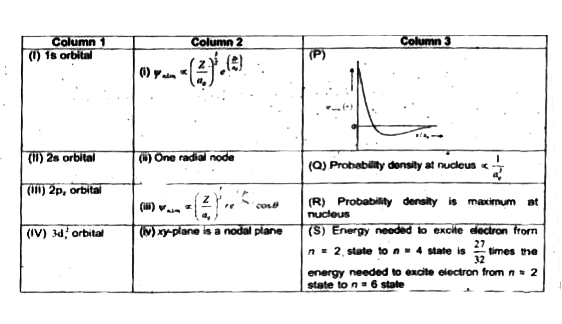The wave function, Ψn,l,ml is a mathematical function whose value depends upon spherical polar coordinates (r,θ,ϕ) of the electron and characterized by the quantum numbers n, l and nl, Here r is distance from nucleus, θ is colatitude and ϕ is azimuth. In the mathematical functions given in the Table, Z is atomic number and a0 is Bohr radius.


For the given orbital in Column 1, the only CORRECT combination for any hydrogen-like species is:
(I)(iv)(R)
(I)(i)(P)
(II)(i)(Q)
(I)(i)(S)
The correct Answer is:D
For H-atom
Is orbital1−ψatom∝(Za0)3/2e−(Zxa0),S
E4−E2=−13.616−(−13.64)=3×13.616
E6−E2=−13.636−(−13.64)=8×13.636
E4−E2 is 2732 times of E6−E2
Similar Questions
The wave function, Ψn,l,ml is a mathematical function whose value depends upon spherical polar coordinates (r,θ,ϕ) of the electron and characterized by the quantum numbers n, l and nl, Here r is distance from nucleus, θ is colatitude and ϕ is azimuth. In the mathematical functions given in the Table, Z is atomic number and a0 is Bohr radius.


For hydrogen atom, the only CORRECT combination is:
View SolutionThe wave function, Ψn,l,ml is a mathematical function whose value depends upon spherical polar coordinates (r,θ,ϕ) of the electron and characterized by the quantum numbers n, l and nl, Here r is distance from nucleus, θ is colatitude and ϕ is azimuth. In the mathematical functions given in the Table, Z is atomic number and a0 is Bohr radius.


For ion, the only INCORRECT combination is:
View SolutionThe wave function ψn,l,m is a mathematical function whose value depends upon spherical polar coordinates (r,θ,ϕ) of the electron and characterized by the quantum numbers n,l and m. Here r is distance from nucleus θ is colatitude and ϕ is azimuth. In the mathematical functions given in the Table, Z is atomic number and a0 is Bohr radius.

For the given orbital in Column 1 the only Correct combination for any hydrogen -like species is
View SolutionThe set of quantum numbers, n = 3, l = 2, ml=0
View SolutionHow many electrons in an atom may have the quantum numbers n=4 and l=0?
View SolutionThe set of quantum numbers, n = 2, l = 2, ml = 0 :
View SolutionWhat is the maximum number of electron in an atom that can have the quantum numbers n=4,ml=+1?
View SolutionThe values of quantum numbers n, l and m for the fifth electron of boron is
View SolutionThe total number of electrons in a subshell designated by azimuthal quantum number, l is given as
View SolutionIn an atom, the total number of electrons .having quantum numbers. n = 4 , |ml|=1 is :
View Solution